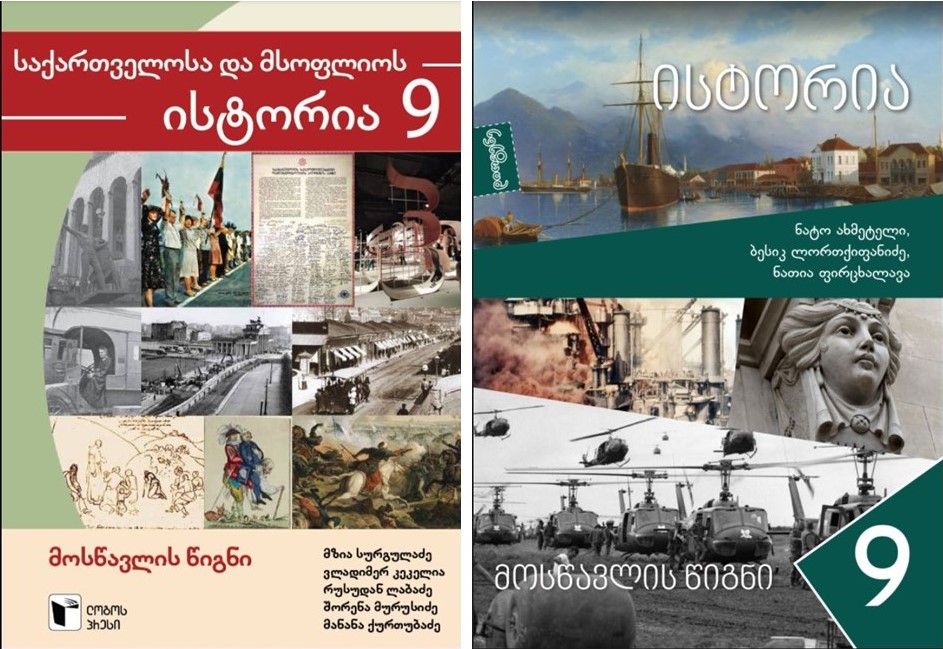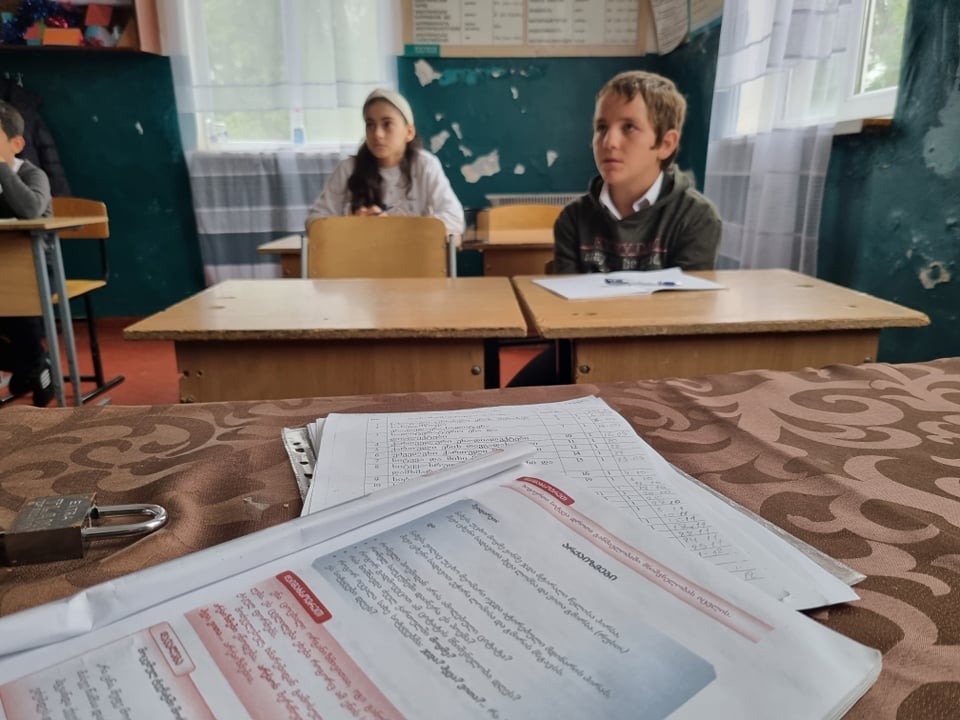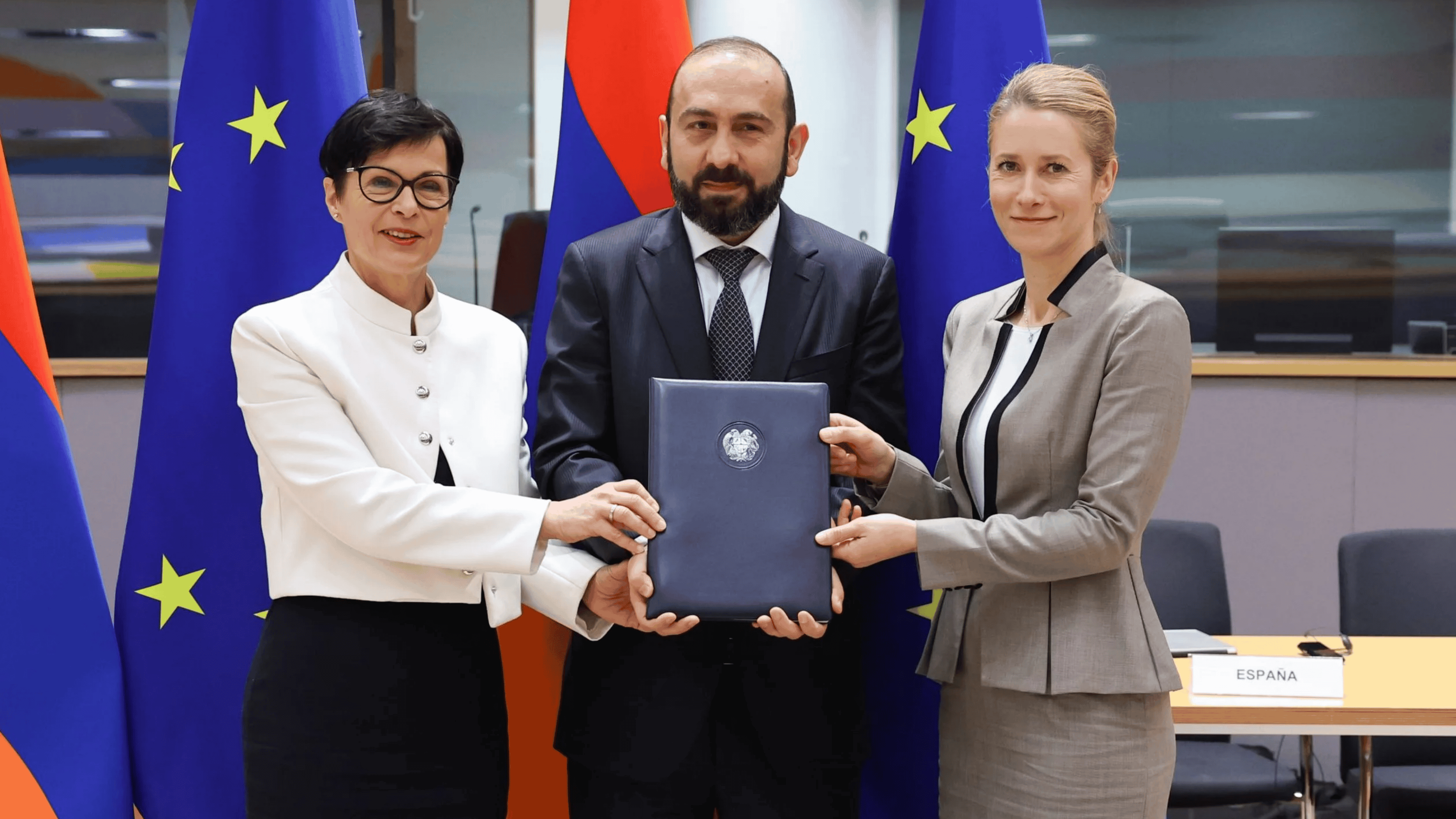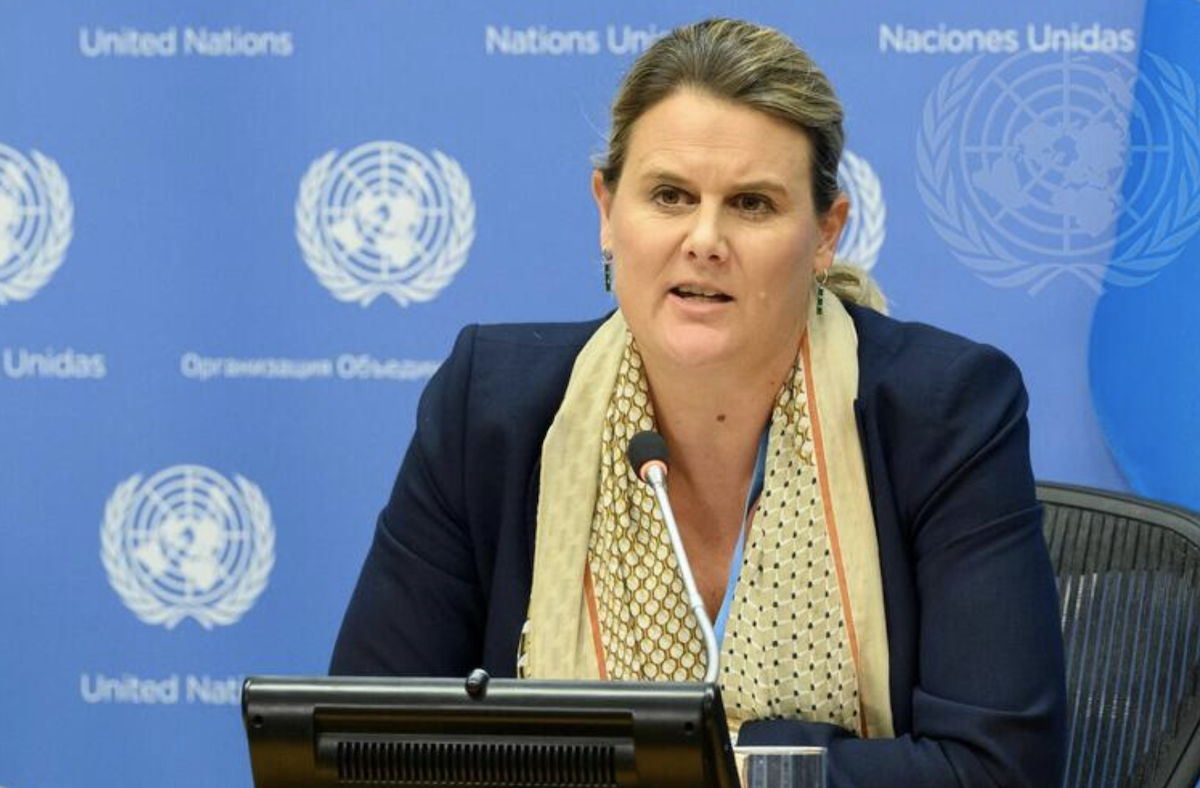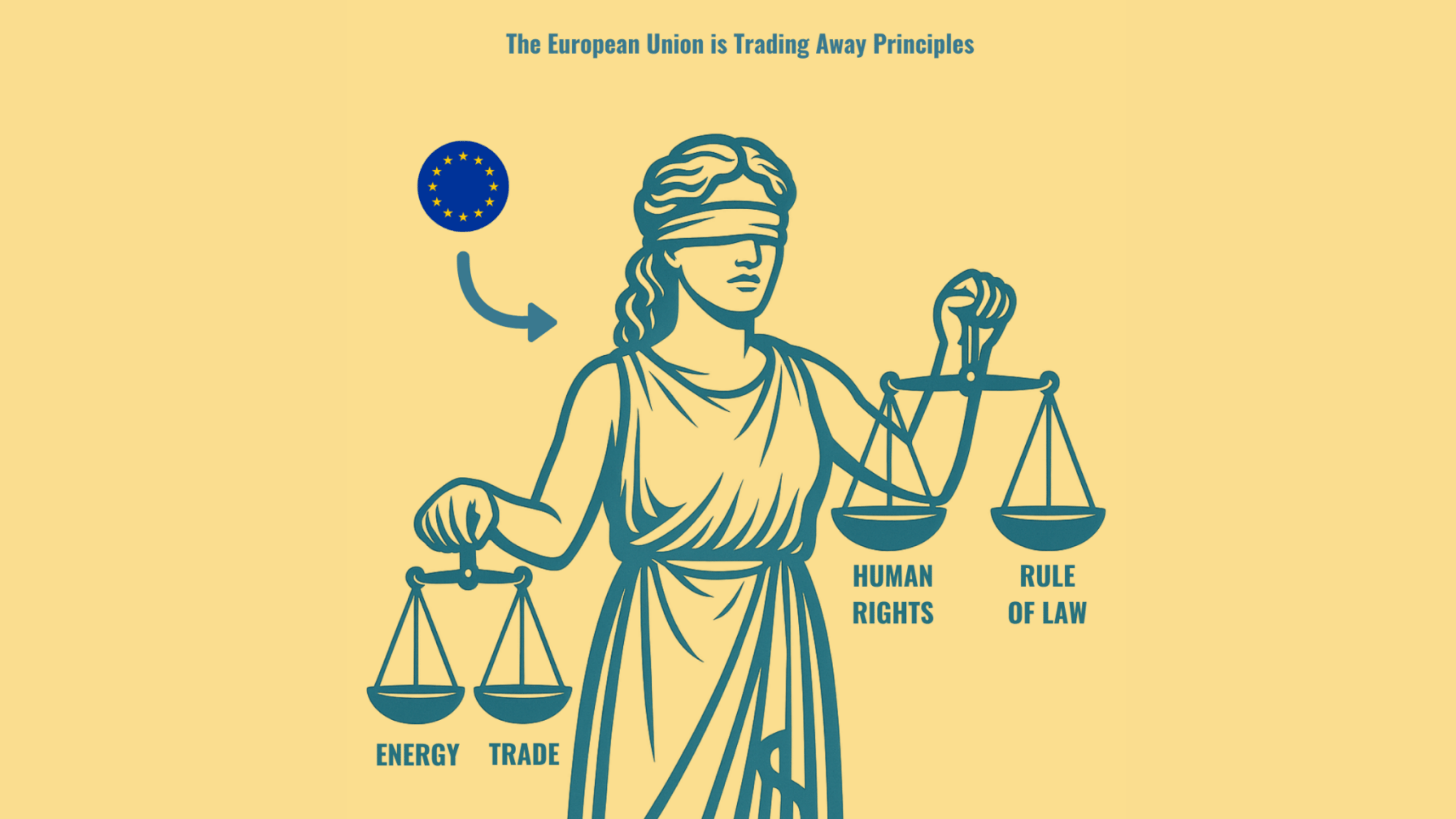How history is taught in Europe. Georgia and Armenia participate in large-scale study
History teaching in Georgia
The Observatory on History Teaching in Europe (OHTE) at the Council of Europe has published a general report on how the subject of history is taught in Georgia and Armenia, and across the EU.
The experts studied the characteristics of history teaching in 16 member countries of the Observatory, including Georgia and Armenia.
The presentation of the Observatory’s study took place in the main building of the Council of Europe in Strasbourg. During the two-day event journalists, experts, historians, teachers and politicians from across Europe were invited to attend the presentation. JAMnews attended the event from Georgia at the invitation of the Council of Europe.
General trends
Member countries included Albania, Andorra, Armenia, Cyprus, France, Georgia, Greece, Ireland, Luxembourg, Malta, Portugal, North Macedonia, Serbia, Slovenia, Spain and Turkey; with observer status was Ukraine. That is, these are countries that have a relatively weak education system in Europe.
The main focus of the study was school programs, the place of the subject of history in the education system, history textbooks and the difficulties faced by teachers and students in different countries on the European continent.
According to the report, the approach to history teaching varies from country to country, but there are common trends.
For example, teachers in all countries are increasingly using digital tools and technology in the teaching of history. As they develop, teachers have access to more and more educational resources. However, the overall qualifications of teachers remain largely unchanged.
▇ According to teachers, the greatest emphasis in history teaching is on national history, followed by European history and then world history.
The general trend is that national minorities are increasingly being given more space in the history curricula of 14 out of 17 countries – information on them is included in varying amounts in the textbooks of different countries. However, information on marginalized peoples (e.g. the Roma) remains a problem and is underrepresented in European history textbooks.
Nevertheless, one of the main challenges for teachers in terms of textbook content is that they still do not adequately cover information on different social groups and minorities within a particular country.
The study also shows that migration history, environmental (natural) history and gender history are also underrepresented in Europe.
In almost all countries, teachers describe history curricula as largely flexible and manageable, but their main problem is an overload of material that puts too much pressure on students.
The study also shows that textbooks are still the main resource. However, teachers also use their own notes and various websites. According to teachers, the greatest emphasis in history teaching is on national history, followed by European history and then world history.
In terms of era, the most time is spent teaching Medieval and Modern Age. Thematically, the greatest emphasis is placed on military-political and socio-economic history, which teachers consider to be a sound approach.
In almost all countries, teachers consider examinations as a way of assessing knowledge to be problematic, and an overloaded curriculum and stressful exams put additional strain on the learning process for both students and teachers.
Educators cite the didactic method as the most common form of instruction. Alternative teaching methods are used less frequently.
A negative trend is the reduction of hours allocated to the subject of history in most of the countries studied. This is accompanied by a reduction in funding for history departments in universities.
In most OHTE member countries, however, history teachers are trained at universities.
What is happening in the Caucasus?
Armenia and Georgia have education systems in which private and public schools follow the same curricula. Special schools, such as religious or ethnic minority schools, follow the curricula of public schools in both Armenia and Georgia.
In both Armenia and Georgia, history is a compulsory subject at school and must be studied by every student.
Among the countries studied, Armenia is the only country where history is not taught in primary grades and is introduced only at the next level under the title of the multi-disciplinary subject “Our Homeland and Culture”.
Armenia and Andorra are exceptions where the component of social diversity, such as national, religious, ethnic or gender minorities, does not appear at all in the history curriculum.
Armenia and Georgia are also on the list of countries where the Ministry of Education is responsible for the history curriculum from start to finish. Other state institutions, as well as the administrative bodies of regional or local municipalities, are not involved in this process in any way.
▇ In Armenia, the emphasis is more on Armenian “national pride”, whereas in Georgia, European identity is combined with an internal national factor.
In both countries, the Ministry of Education invites various representatives of independent educational organizations, civil society or expert circles for consultations, but ultimately sets the guidelines itself.
Here, the main difference between Armenia and Georgia is that minority representatives participate in the history program only in Georgia.
In contrast to the pan-European trend, the study showed that the number of hours of history teaching in Georgia has increased in recent years.
The survey showed that Georgian teachers are among the most satisfied with textbooks: 51 percent of Georgian teachers surveyed believe that history textbooks are flexible in terms of presentation. The majority of Albanian teachers, 58 percent, and 49 percent of teachers from Armenia believe the same.
Georgia’s history curricula include the history of all neighboring countries in varying proportions. In Armenian history textbooks, information about neighboring countries is mainly given from a political and military perspective.
Of the various resources for studying history (e.g., official textbooks, film, digital applications, literature, online search engines, video games, etc.) in Armenia, almost all are officially supported by the relevant state authorities. In Georgia, on the other hand, some of these resources are supported, while some require only official recommendations.
▇ Often the main subject of history teaching is the glorious past of the country, wars and victories. Georgia and Armenia are no exception in this respect.
Armenia and Georgia have different approaches to purchasing history textbooks. In Armenia, the state takes it upon itself, while in Georgia it is divided between the state and the student’s family.
Georgia and Armenia showed one of the biggest differences in the amount of time devoted to different areas within history lessons. 89 percent of Armenian teachers say they spend the most time teaching political and military history, here Armenia ranks second after Serbia (92 percent). Georgia ranks lower in this regard (with 57 percent), and only Albania (30 percent) has a lower figure.
Most Georgian and Armenian teachers believe that among the main goals of their teaching are to develop students’ historical thinking (92 percent of both), to teach the value of living together in a diverse democratic society (88 and 83 percent, respectively), and to build identity (85 and 72 percent, respectively).
There is a difference between Georgia and Armenia in terms of teaching national identity: in Armenia the emphasis is more on Armenian “national pride”, whereas in Georgia European identity is combined with an internal national factor.
According to the research, very often political and military history is linked to the national state discourse about the country’s glorious past, wars and victories. Georgia and Armenia are no exception in this regard.
Evaluations of scholars and experts
In Strasbourg, after the presentation of the study a panel discussion was held in which European journalists, experts, historians, teachers and politicians took part, raising various important issues. But the main question of the event was “Is it possible to teach history in a way that teaches peace?”
Most of the speakers pointed out that history is unfortunately used more for nationalistic and manipulative purposes than for spreading democratic values and peace.
However, historians and history teaching experts agree that there are ways of teaching history that promote peace both between and within countries.
History books should focus more on shared values and coexistence between societies, but the emphasis on endless wars works against this narrative.
Speakers also generally agreed that improving the quality of history teaching directly leads to a generation that is less vulnerable to political manipulation through the use of history. This will help ensure that forces interested in distorting and manipulative interpretations of history will not be able to easily deceive the public and will not be able to effectively engage in aggressive rhetoric or wars.
▇ The focus of history books should be on common values and coexistence of societies, not war.
According to the speakers, the problem of manipulative use of history has become particularly evident in the context of Russia’s military aggression against Ukraine. In their opinion, Russia claims that Ukraine historically did not exist and tries to justify the war by falsifying history and using it for political purposes.
Experts believe that history can become an instrument of peace rather than war. However, the study itself shows that European countries still have a lot of work to do on this path. Today’s history curricula and textbooks do not provide such an opportunity, as they often repeat or promote non-inclusive national narratives.
According to the speakers, history is used for personal purposes by politicians who try to legitimize their power through history. Often it is the struggle for power that leads to wars, and history becomes a tool in their hands to influence society. According to the speakers, such risks can be minimized if history is taught correctly.
Historians themselves also talked about the challenges they face across Europe to bring their historical research closer to the truth.
According to them, access to archives is difficult in some countries, making their work more difficult. Historians also note that academic freedom in this area is not high enough, as history in many societies is a sensitive topic around which national and political narratives are constructed.
▇ History is used for personal purposes by politicians who try to legitimize their power with its help.
According to the speakers, history as a science also suffers from a lack of financial support in various European countries. This affects the quality of teaching at both school and university levels.
Along with the development of technology, history teaching has faced a new problem. This is so-called fake news, which aims to deliberately distort historical facts.
According to experts, modern methods of teaching history should include the development of skills in pupils and students that will teach them to distinguish false information from reliable information.
As one speaker said, if historians and history teachers cannot do their job, social networks and media will do it for them. And from this point of view, the development of students’ critical thinking should become one of the important areas of history teaching.
▇ In recent years, the teaching of history has faced a new problem: so-called fake news.
When it comes to technology, historians also point out that it is no longer possible to teach history the way it was done decades ago. History needs to keep up with technology, and modern digital tools need to be more integrated into the way we teach.
Speakers also talked about history from the perspective of current political events.
Renowned historian Timothy Garton-Ash said that “we have never lived in a Europe better than it is now. But that Europe is now under attack by imperial and undemocratic forces.” The historian noted that in light of the current events in Ukraine, long-term peace in Europe is under threat.
▇ Timothy Garton-Ash: 2008 was a turning point in modern European history, bringing the global financial crisis and Russia’s aggression against Georgia.
Garton-Esh also noted that the tragedy of September 11 was a turning point in the history of the United States, but not Europe.
According to him, the turning point in the modern history of Europe was 2008, which brought the global financial crisis and Russia’s aggression against Georgia.
According to the historian, it was Russia’s seizure of Georgian territories and inadequate response of the West that opened Pandora’s box. This was followed by the annexation of Crimea, the war in Donbass, and now Russia’s full-scale invasion of Ukraine. According to Garton-Ash, the current events are now the biggest challenge to peace in Europe, which must be answered by all members of society, including academia.
The participants of the event recalled the words of author George Orwell: “He who controls the past controls the future. He who controls the present controls the past”, and agreed that historians can take control of history. So with the right teaching and the right approaches, history can become a tool not for manipulation and wars, but for healthy academic debate and peace.











